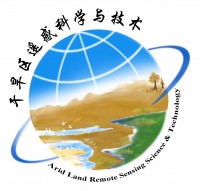Estimation of Soil Organic Matter in Arid Zones with Coupled Environmental Variables and Spectral Features
The soil organic matter (SOM) content is a key factor affecting the function and health of soil ecosystems. For measurements of land reclamation and soil fertility, SOM monitoring using visible and near-infrared spectroscopy (Vis-NIR) is one approach to quantifying soil quality, and Vis-NIR is important for monitoring the SOM content in a broad and nondestructive manner. To investigate the influence of environmental factors and Vis-NIR spectroscopy in estimating SOM, 249 soil samples were collected from the Werigan–Kuqa oasis in Xinjiang, China, and their spectral reflectance, SOM content and soil salinity were measured. To classify and improve the prediction accuracy, we also take into account the soil salinity content as a variable indicator. Relevant environmental variables were extracted using remote sensing datasets (land-use/land-cover (LULC), digital elevation model (DEM), World Reference Base for Soil Resources (WRB), and soil texture). On the basis of Savitzky–Golay (S-G) smoothing and first derivative (FD) preprocessing of the original spectrum, three clusters were obtained by K-means clustering through the use of Vis-NIR and used as spectral classification variables. Using Vis-NIR as Model 1, Vis-NIR combined with spectral classification as Model 2, environmental variables as Model 3, and the combination of all the above variables (Vis-NIR, spectral classification, environmental variables, and soil salinity) as Model 4, a SOM content estimation model was constructed using partial least squares regression (PLSR). Using the 249 soil samples, the modeling set contained 166 samples and the validation set contained 83 samples. The results showed that Model 2 (validation r2 = 0.78) was better than Model 1 (validation r2 = 0.76). The prediction accuracy for Model 4 (validation r2 = 0.85) was better than Model 2 (validation r2 = 0.78). Among these, Model 3 was the worst (validation r2 = 0.39). Therefore, the combination of environmental variables with Vis-NIR spectroscopy to estimate SOM content is an important method and has important implications for improving the accuracy of SOM predictions in arid regions.
期刊:
Sensors
2022
作者:
Zipeng Zhang,Jianli Ding,Zheng Wang
DOI:10.3390/s22031194
Estimation of Soil Organic Carbon Content in the Ebinur Lake Wetland, Xinjiang, China, Based on Multisource Remote Sensing Data and Ensemble Learning Algorithms
Soil organic carbon (SOC), as the largest carbon pool on the land surface, plays an important role in soil quality, ecological security and the global carbon cycle. Multisource remote sensing data-driven modeling strategies are not well understood for accurately mapping soil organic carbon. Here, we hypothesized that the Sentinel-2 Multispectral Sensor Instrument (MSI) data-driven modeling strategy produced superior outcomes compared to modeling based on Landsat 8 Operational Land Imager (OLI) data due to the finer spatial and spectral resolutions of the Sentinel-2A MSI data. To test this hypothesis, the Ebinur Lake wetland in Xinjiang was selected as the study area. In this study, SOC estimation was carried out using Sentinel-2A and Landsat 8 data, combining climatic variables, topographic factors, index variables and Sentinel-1A data to construct a common variable model for Sentinel-2A data and Landsat 8 data, and a full variable model for Sentinel-2A data, respectively. We utilized ensemble learning algorithms to assess the prediction performance of modeling strategies, including random forest (RF), gradient boosted decision tree (GBDT) and extreme gradient boosting (XGBoost) algorithms. The results show that: (1) The Sentinel-2A model outperformed the Landsat 8 model in the prediction of SOC contents, and the Sentinel-2A full variable model under the XGBoost algorithm achieved the best results R2 = 0.804, RMSE = 1.771, RPIQ = 2.687). (2) The full variable model of Sentinel-2A with the addition of the red-edge band and red-edge index improved R2 by 6% and 3.2% over the common variable Landsat 8 and Sentinel-2A models, respectively. (3) In the SOC mapping of the Ebinur Lake wetland, the areas with higher SOC content were mainly concentrated in the oasis, while the mountainous and lakeside areas had lower SOC contents. Our results provide a program to monitor the sustainability of terrestrial ecosystems through a satellite perspective.
期刊:
Sensors
2022
作者:
Zheng Wang,Lijing Han,Xiaohang Li,Xiangyu Ge,Jianli Ding,Boqiang Xie
DOI:10.3390/s22072685







